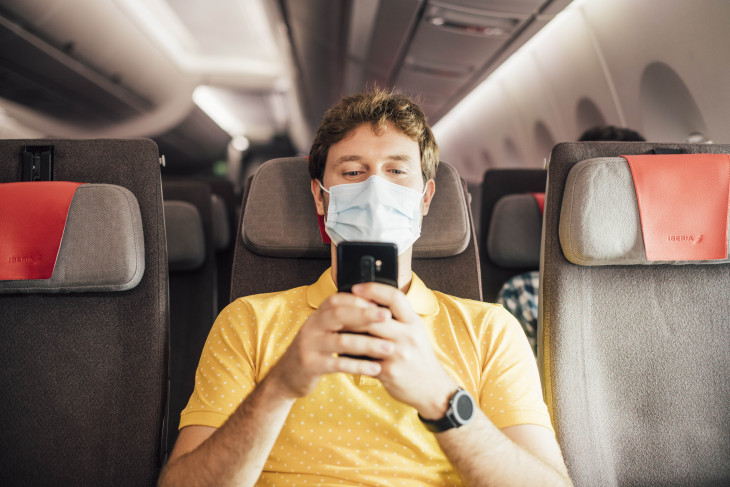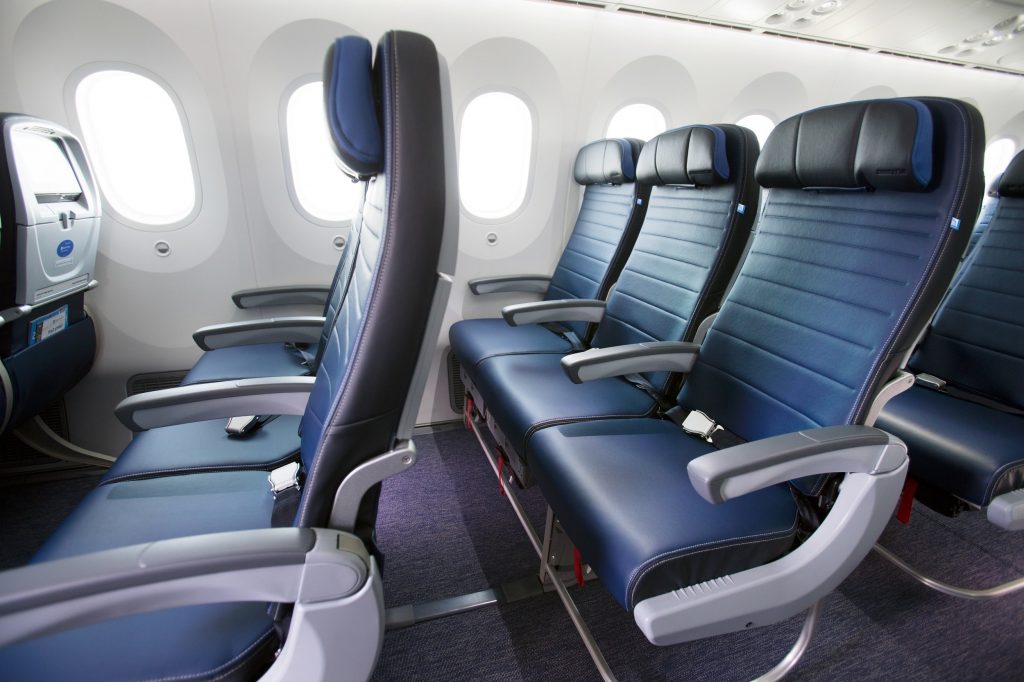
Airlines say they are “carefully reviewing” a new study from the Centers for Disease Control and Prevention (CDC) which concluded that blocking the middle seat between passengers could significantly reduce the risk of being exposed to potentially infectious virus particles, including those that cause COVID-19.
Conducted in partnership with infectious disease researchers at Kansas State University, the CDC study concluded that leaving middle seats vacant to increase physical distancing helps reduce the risk of exposure to infectious diseases by between 23 and 57 per cent.

The study, which used computer modelling based on physical research carried out before the pandemic in 2017, comes just two weeks before Delta Air Lines is set to lift its middle seat cap and start filling planes to full capacity.
“The safety of passengers and crew is always our top priority,” commented a spokesperson for the International Air Transport Association (IATA) – a trade group that represents the vast majority of airlines around the world and which has long argued that other safety measures, such as mandatory mask-wearing, negated the need to block middle seats.
The IATA spokesperson was quick to pick up on several important caveats that came with the latest CDC study. “It’s important to note that this laboratory study did not consider the significant risk-reduction impacts of the wearing of facemasks by passengers and cabin staff,” the spokesperson noted on Thursday.
“Scientific studies that have taken into consideration mask-wearing have concluded that the risk of onboard transmission is very low,” an IATA statement continued.
Airlines have also presented a raft of their own data to back up their argument that flying – even when every single seat is occupied – remains safe and that the risk of catching COVID-19 off a fellow passenger is low.
Along with mandatory mask-wearing rules, many of the studies cite the effect of HEPA air filters and the unique downward air conditioning systems in use on modern jet planes that reduce the overall risk of onboard virus transmission.
While many of the studies have been published by independent and well-respected institutions, some have also been funded by airlines and other travel industry organizations.
Airlines 4 America (A4A), another trade group that represents major U.S. airlines including American, Delta and United Airlines, said airlines had “implemented multiple layers of measures aimed at preventing virus transmission” since the start of the pandemic.
jetBlue, which is also represented by A4A, started filling more seats on its planes last December before completely removing its capacity caps earlier this year. Southwest Airlines lifted its own capacity caps on December 1, saying “science-based findings from trusted medical and aviation organizations” justified its decision.
Meanwhile, Delta became the last hold out to abandon its middle seat blocking policy based on the success of the U.S. vaccination rollout. Capacity caps will be permanently lifted on May 1, although the airline was forced to temporarily lift the caps earlier this month to deal with disruption caused by a pilot shortage.
American Airlines, which never had a formal middle seat blocking policy, says it is flying many of its domestic services at 80 per cent capacity as travelers return to the skies. Yesterday, the airline said it would be operating at 90 per cent of 2019 capacity by this summer.
Mateusz Maszczynski honed his skills as an international flight attendant at the most prominent airline in the Middle East and has been flying ever since... most recently for a well known European airline. Matt is passionate about the aviation industry and has become an expert in passenger experience and human-centric stories. Always keeping an ear close to the ground, Matt's industry insights, analysis and news coverage is frequently relied upon by some of the biggest names in journalism.







